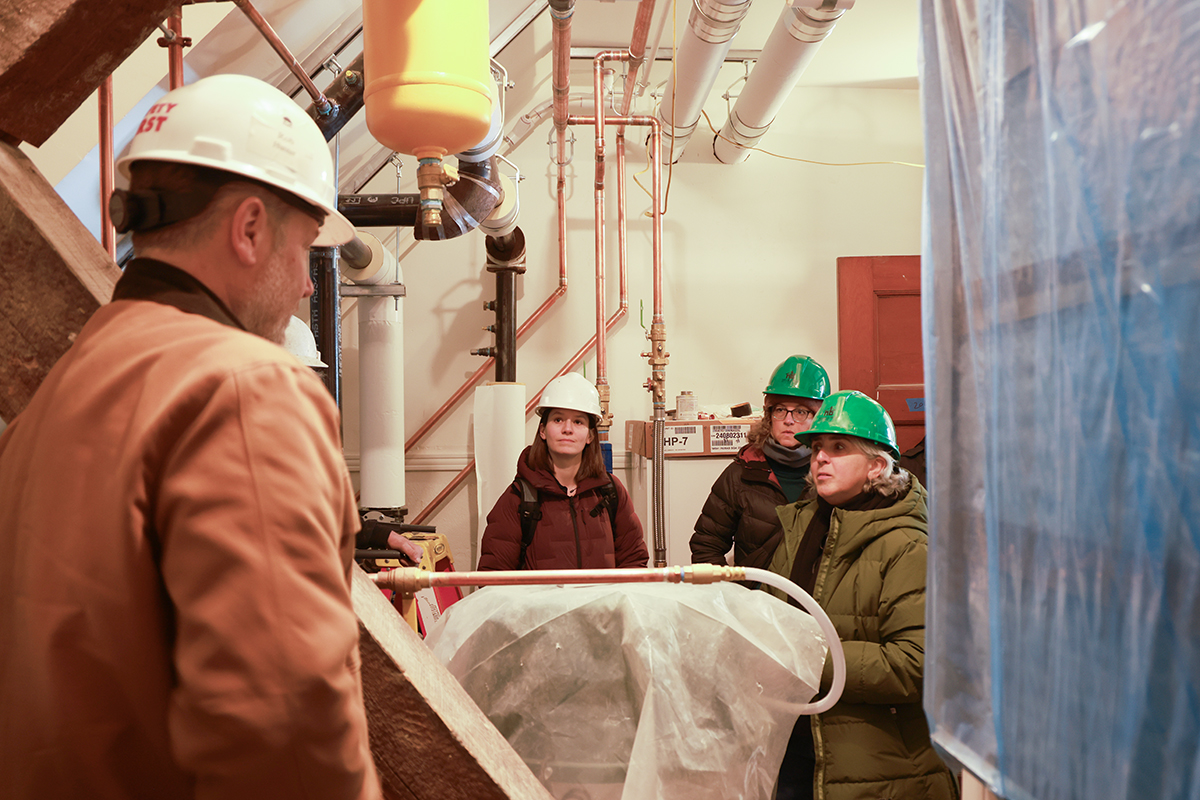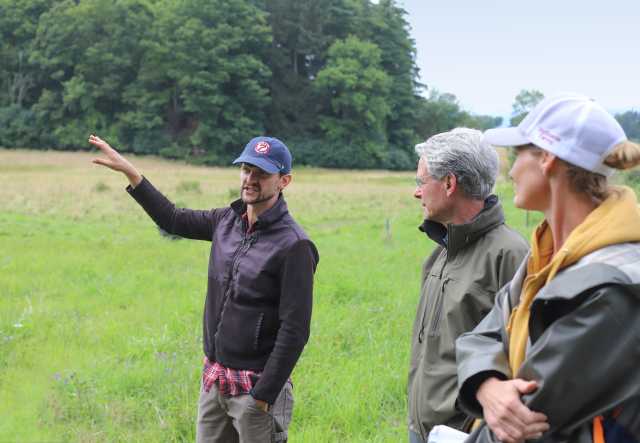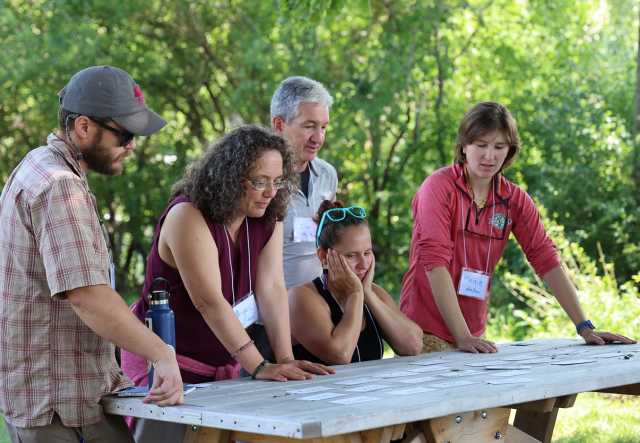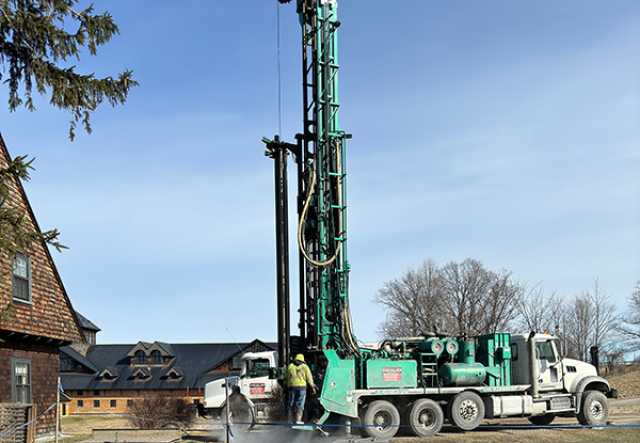Getting to Net Zero: Where Are We At?
Shelburne Farms’ Net Zero project is an ambitious climate initiative launched in 2022 with two main goals. One, the organization aims to bring annual net greenhouse gas emissions from the property and its operations to zero by 2028. Two, we are expanding our education efforts around these and other climate solutions, both in our existing programs and with peer organizations in our fields.
The project continues the lifelong work of the late and much loved Marshall Webb, who cared deeply for Shelburne Farms’ lands and education for sustainability programs. It also expands the organization’s commitment to action on one of the most pressing social and environmental issues of our time.
On a very basic level, achieving Net Zero simply means decreasing emissions of greenhouse gases while increasing removal from the atmosphere. The complex — and interesting! — task is determining how to make these changes in the most affordable, operationally manageable, and educationally beneficial way, to help us offer better, more accessible, and more relevant climate education across Shelburne Farms’ programs.
Importantly, however, decreasing emissions and increasing sequestration operate on different time scales. Emissions can be relatively quickly reduced by changing energy sources and use. Increasing sequestration is a longer-term effort involving the much slower biological processes of soil development and forest growth. (Because we’ve carefully managed our pastures for decades, our field soils already store most of the carbon they will be able to.)
In light of this, our immediate priority has been, and continues to be, to reduce emissions from buildings, property operations, and farm production. Alongside this, we are also doing longer-term work to increase our carbon storage capacity on the farm over time through our management of soils and forests. These have been our initiatives:

Buildings & Operations
- Converting several key buildings, including the Coach Barn, to geothermal systems, which utilize the stable underlying temperature of the earth for heating and cooling
- Renovating buildings for greater insulation and energy efficiency
- Reducing energy use for staff transportation and travel wherever possible
- Planning for significant expansion of solar power generation on the property
Dairy
- Partnering with researchers and industry leaders on emissions reduction strategies for mid-sized dairies, including improvements to manure management and the best use of biochar on the farm.
- Improving feed to reduce animal emissions
- Continuing to carefully manage our pastures through rotational grazing for plant and soil health, storing maximum soil carbon
- Planning for new buildings that use renewable energy as our barns reach the end of their usable life
Forests
- Updating the property’s forest management plan to prioritize retaining larger diameter trees, which disproportionately store and retain carbon.
- When removing trees for timber or to control invasive species, doing so in a way that:
- takes smaller size class trees, to increase large tree retention.
- increases the growth rate and longer-term carbon storage potential of the forest stand, and
- maximizes the use of durable timber products (construction materials, tools, furniture, art, etc.) from cut trees.
Have these efforts moved the Net Zero needle? They have!
Shelburne Farms now performs a basic annual greenhouse gas accounting and modeling process across all departments. An initial baseline assessment was taken in 2019 and annual calculations have been done the past two years. These calculations have shown ongoing improvement across all of these focus areas. The organization has gone steadily down in net emissions since our initial baseline.

*Note: 2024 numbers in particular are initial estimates and subject to revision.
Looking ahead, we expect these numbers to only improve in the coming years. Significant further reductions in building emissions still lie ahead from planned renewable energy projects between 2025 and 2028. We also have plans in place for additional improvements in operations emissions and farm/forest net sequestration across those years. As a result of the progress made to date and planned actions from here, Shelburne Farms’ Net Zero goal is within reach.
We are very grateful for all the staff, board, and community members who have supported this effort in countless ways so far. Please be in touch if you would like to find ways you can support our continued progress towards Net Zero!



